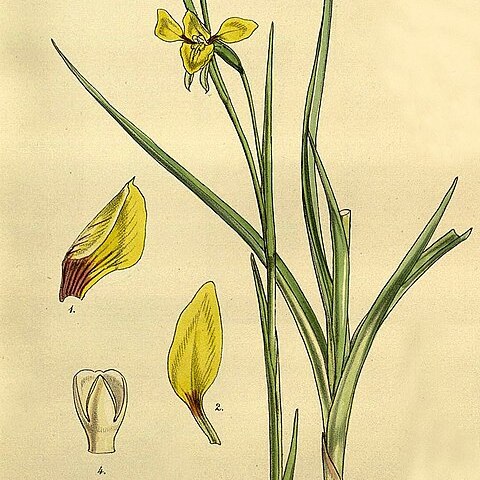Leaves 2, 50–150 × 1–2 mm, straight. Flower stem 60–150 mm, 1-or 2-flowered. Flowers nodding, 15–20 mm across, yellow with gold to orange labellum and dark streaks on dorsal sepal. Dorsal sepal erect or recurved, 7–10 × 5–6 mm. Lateral sepals obliquely deflexed below labellum, 15–20 × 2.5–3 mm. Petals drooping, partially overlapped by labellum; stalk 2–3 mm long, dark; blade narrowly elliptical, 9–14 × 4–4.5 mm, pointed. Labellum 14–16 mm long; lateral lobes triangular, 1–2 × c. 1 mm, entire; midlobe broadly ovate, 13–15 × 7–10 mm, flat. Callus ridges 2, 5–7 mm long, irregular.
An orchid.

